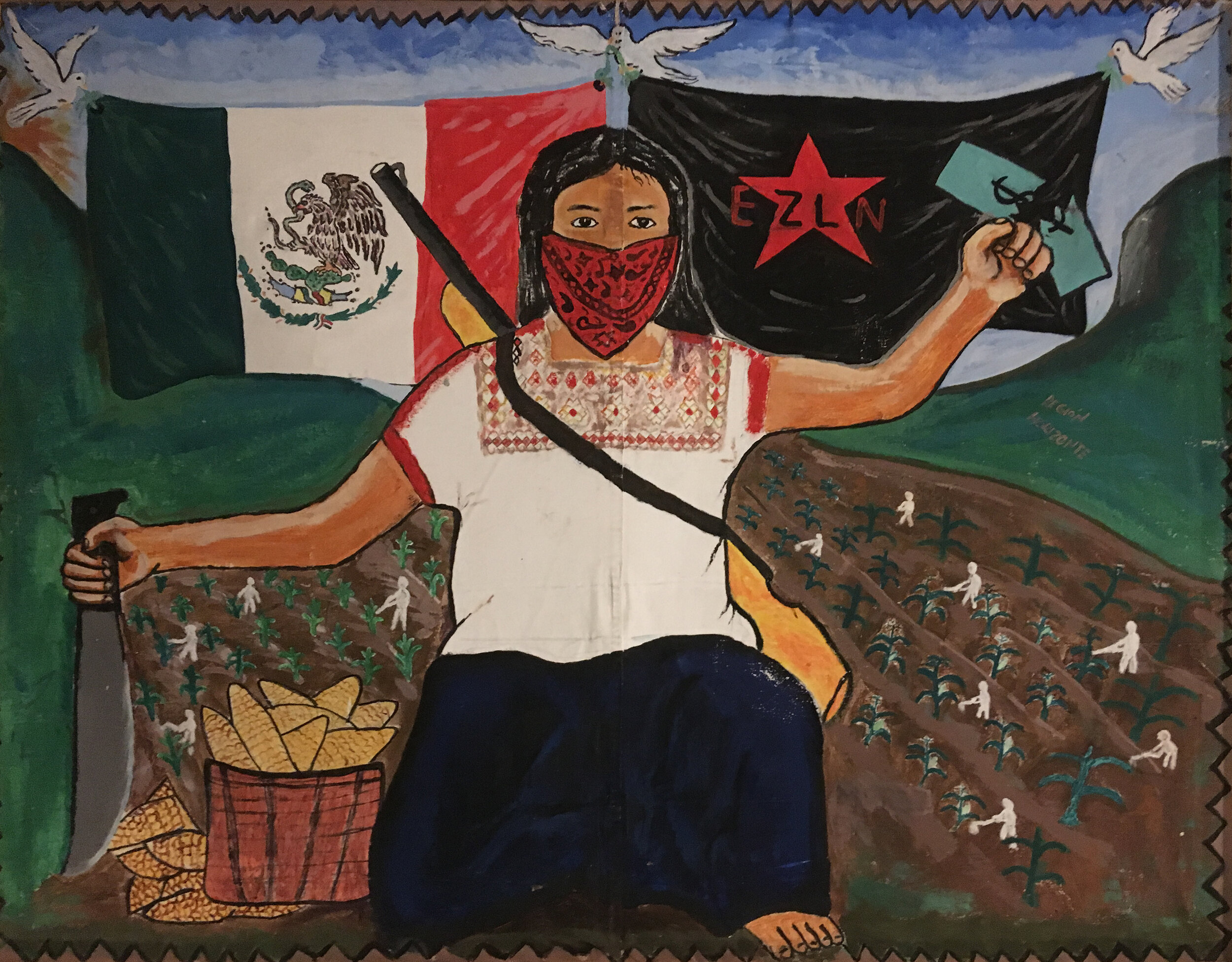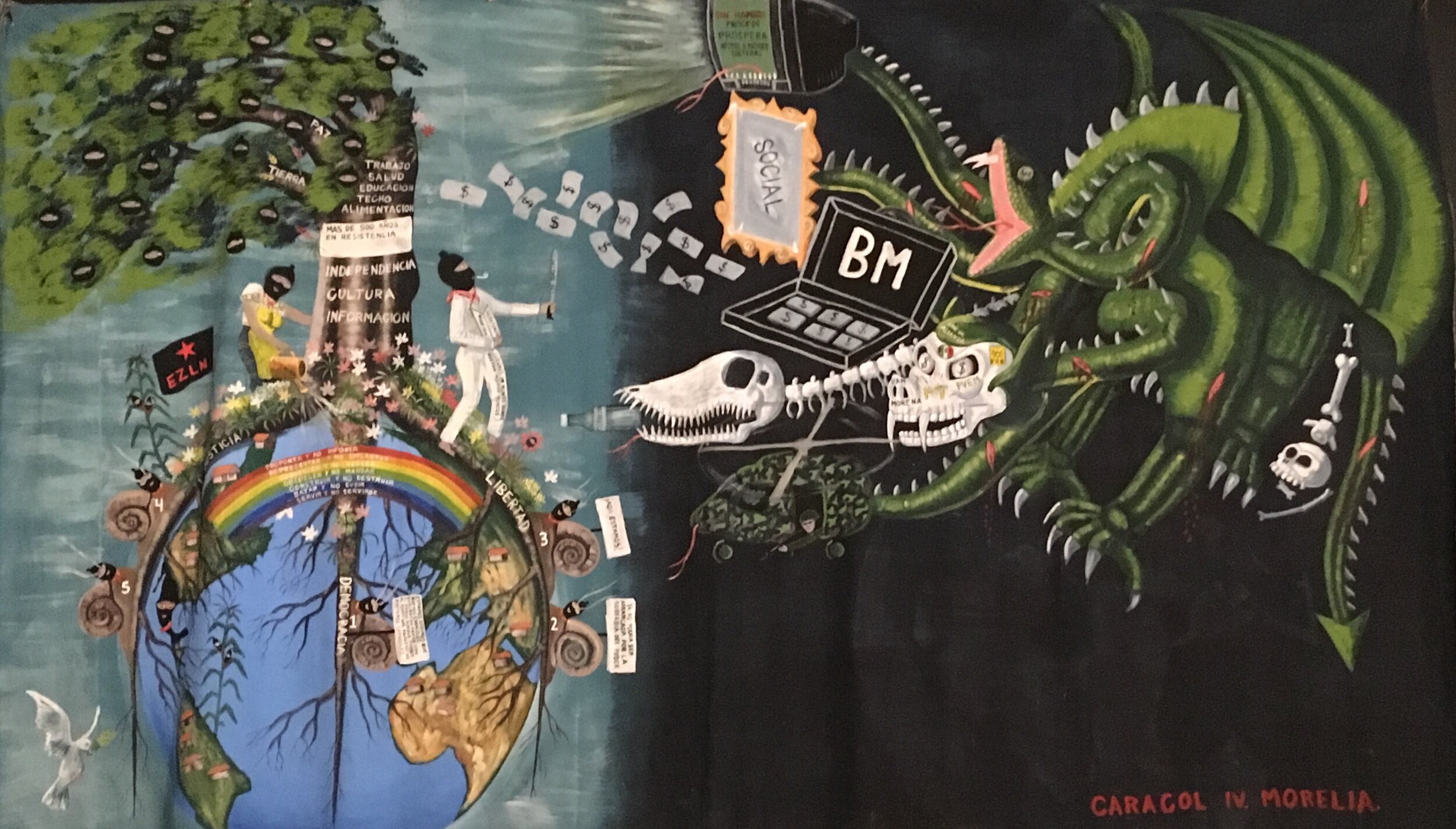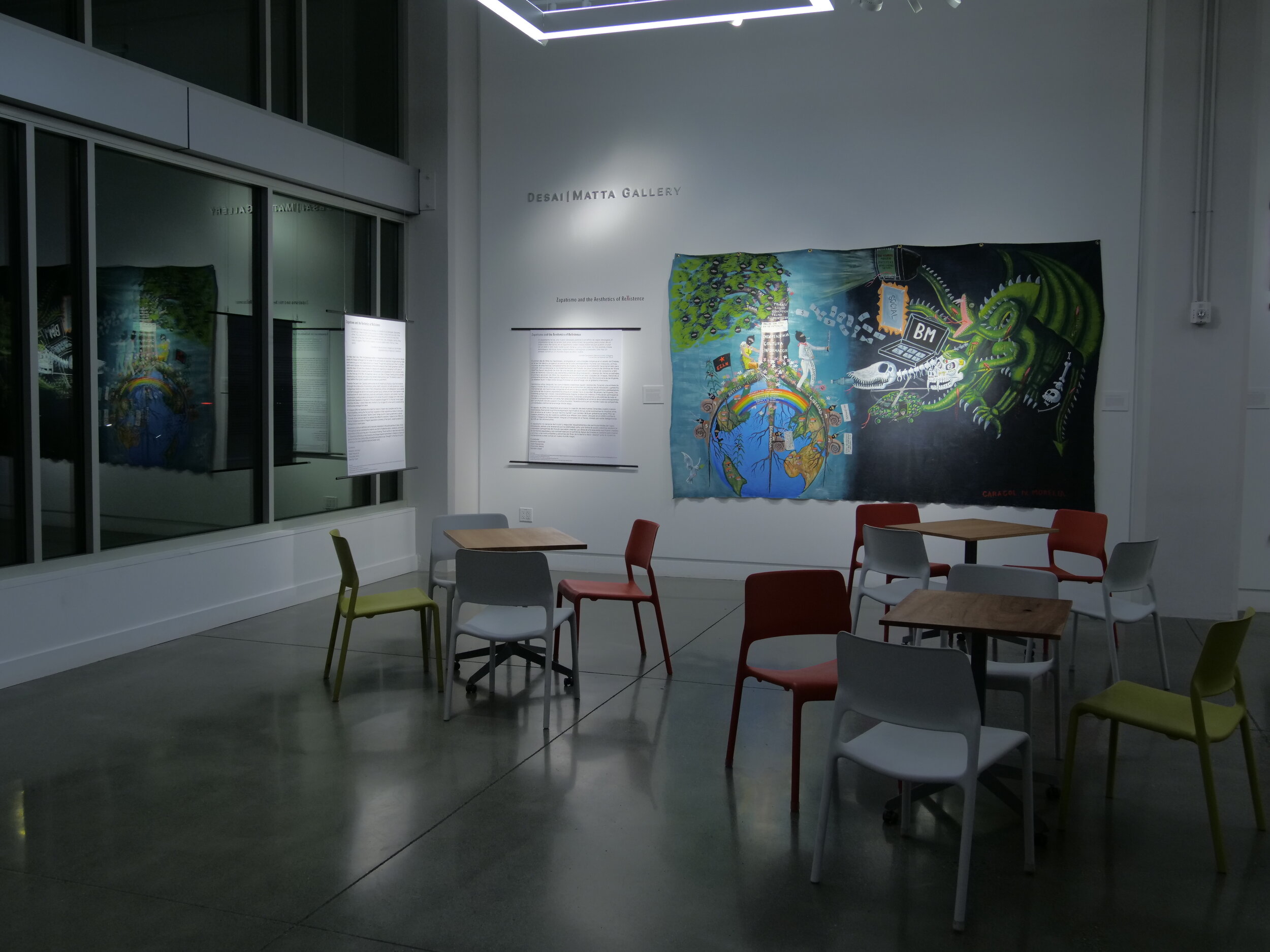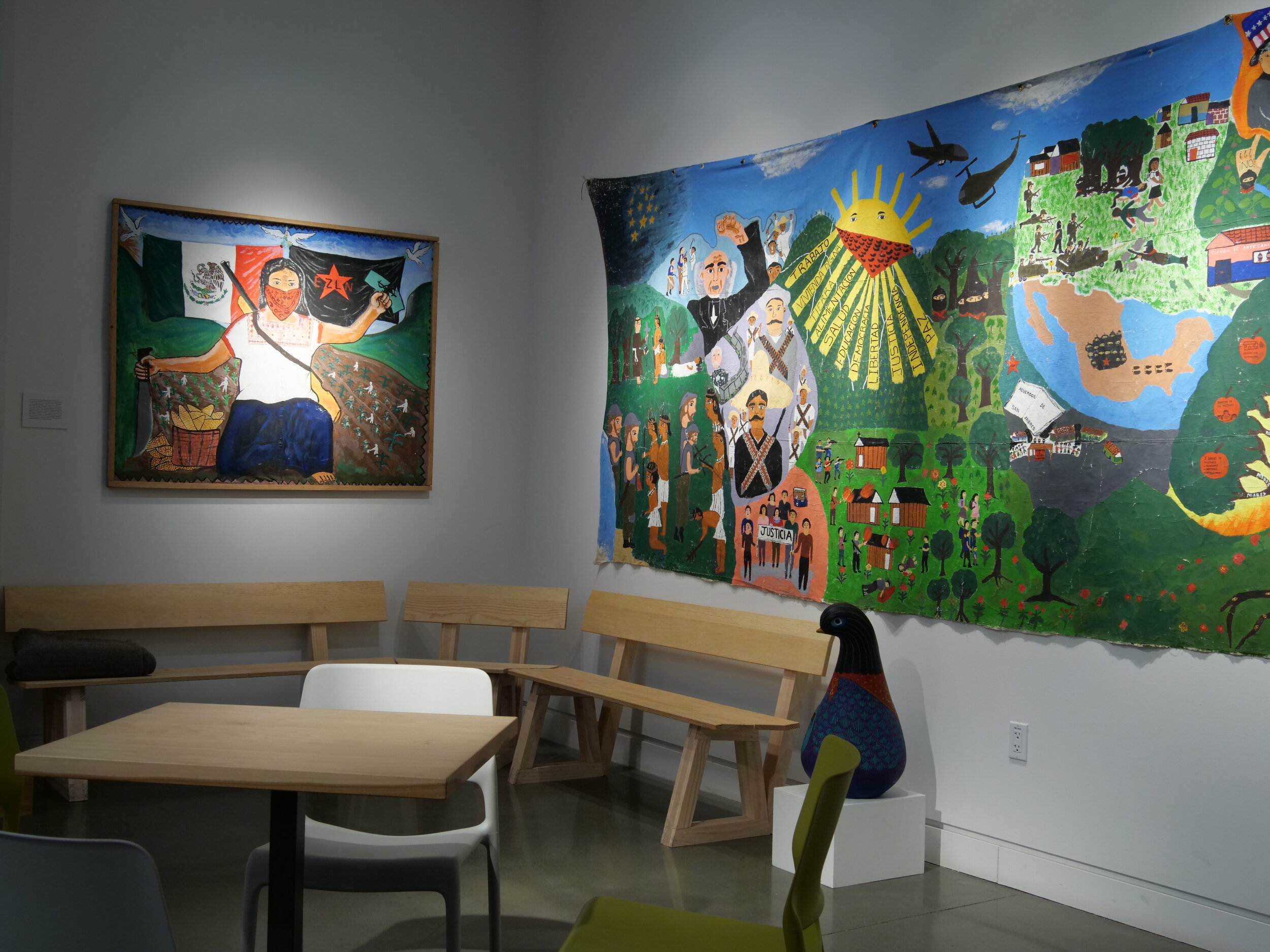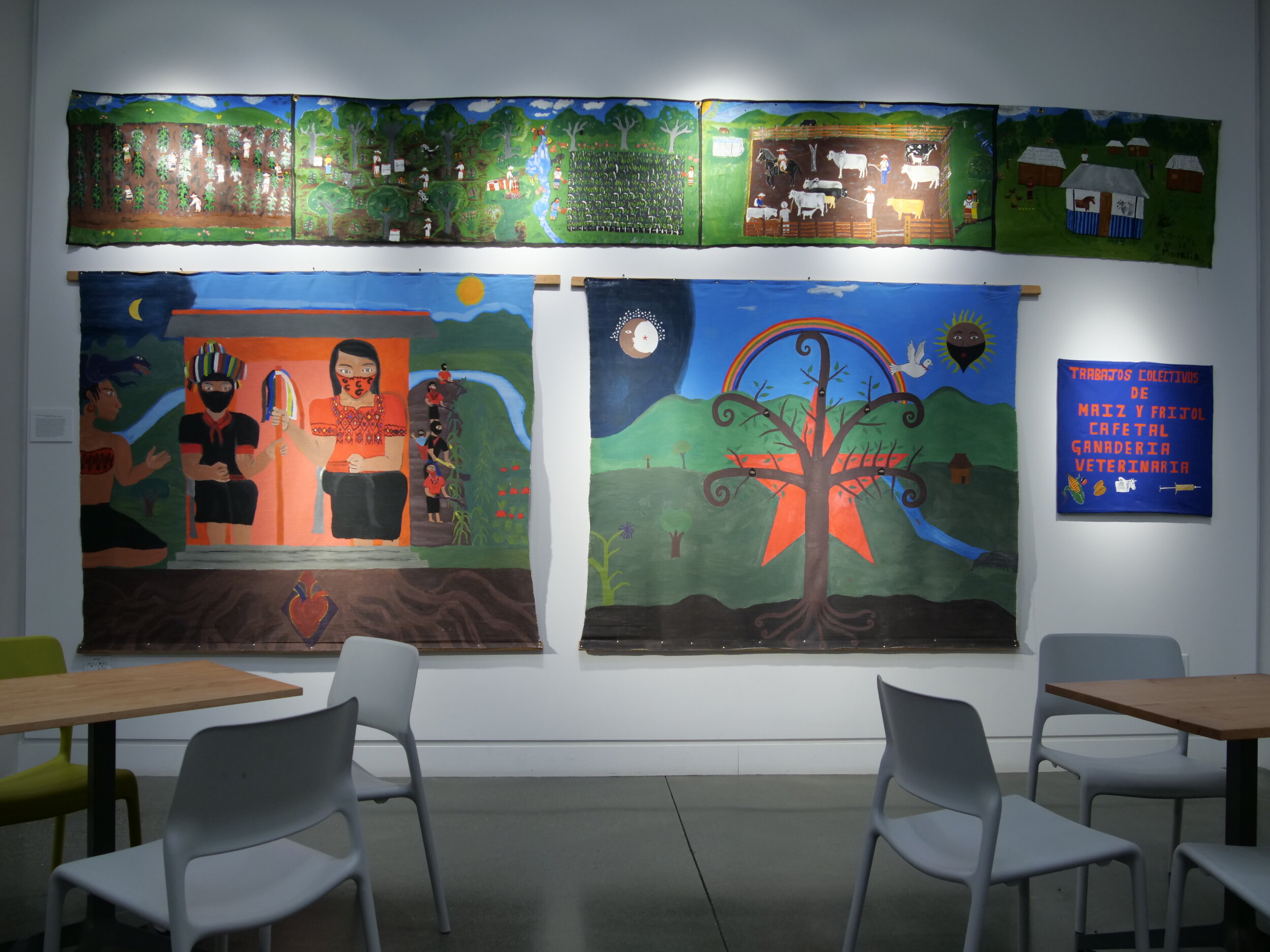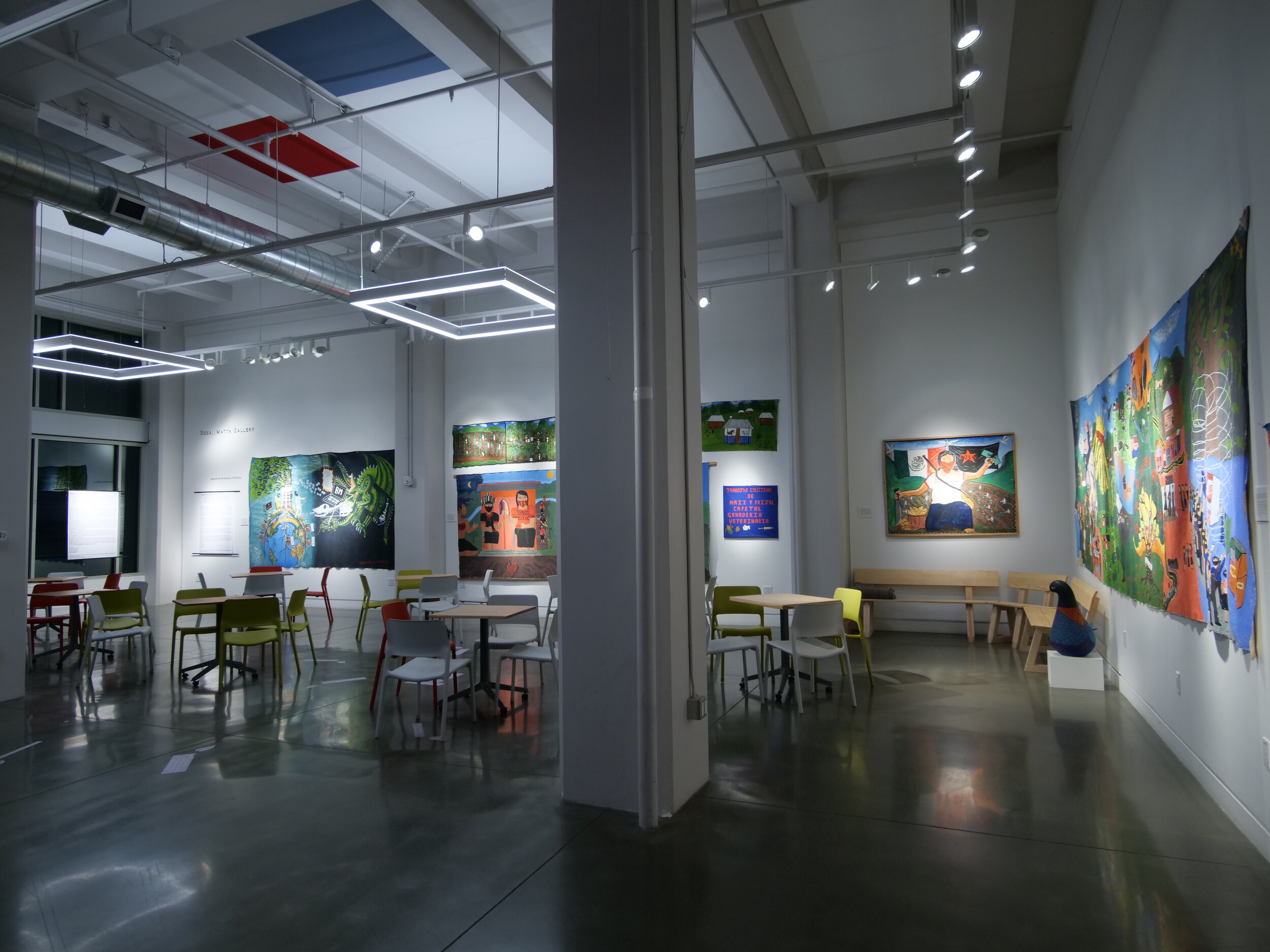Zapatismo and the Aesthetics of ReXistence
September 17-December 12, 2019
Desai | Matta Gallery
Zapatismo and the Aesthetics of ReXistence
Zapatismo is not a new political ideology, or a rehash of old ideologies. Zapatismo is nothing, it does not exist. It only serves as a bridge, to cross from one side to the other. Thus, everyone fits within Zapatismo, everyone who wants to cross from one side to the other. There are no universal recipes, lines, strategies, tactics, laws, rules, or slogans. There is only a desire – to build a better world, that is, a new world.
Clandestine Revolutionary Indigenous Committee
Zapatista Army of National Liberation
On New Year’s Day, 1994, the Zapatistas—rooted in indigenous communities in the southern Mexican state of Chiapas—emerged into the center of the world-wide anti-capitalist struggle wearing masks and carrying guns, many made entirely out of wood. Though their uprising was timed to coincide with—and oppose—the implementation of the North American Free Trade Agreement (NAFTA), it was the result of more than a decade of underground organizing in resistance to 500 years of colonial rule and the increasing pressures of privatization and dispossession from ancestral lands. On the first day of the 1994, the Zapatistas rose up in six cities in Chiapas, freeing political prisoners, destroying civic records, and announcing Women’s Revolutionary Law. The rebellion lasted for 12 days before they signed a ceasefire with the Mexican government.
Twenty-five years later, Zapatista communities are still resisting by forging a dignified existence through the construction of autonomous justice, health, education, and self-governance, holding indigenous traditions at the center of their philosophical, political, and pedagogical values. Zapatista women’s struggle has led the work towards gender equity; women and men have together created mechanisms for better healthcare, grassroots participatory education, and greater local food sovereignty. Inviting students and educators from across the world to engage with them, they’ve positioned Zapatismo in the lexicon of the anti-capitalist struggle for “Un Mundo Donde Quepan Muchos Mundos,” A World Where Many Worlds Fit. Our struggle for a new world is shared and true democracy emerges from below.
In August 2019, the Zapatistas announced the creation of seven new Caracoles and four new municipalities, marking the first significant expansion of their autonomous zones in many years. One of them is the new Caracol “Jacinto Canek” whose council of good government is named “Flower of our word and light of our peoples that reflect for everyone,” located at the CIDECI-UniTierra (Indigenous Center of Integral Capacitation-University of the Earth), visited by several CIIS delegations in recent years.
Zapatismo claims no definition and is resolutely responsive to the particularities of place. Woven throughout we see a reverence for creativity as a form of collective action, resistance, and shared expression of the world they are in the process of making. The art works on view here were created in Zapatista territories and are shared by the Chiapas Support Committee in Oakland to inspire and galvanize Bay Area communities and people everywhere to say “Enough!” in the face of injustice, inviting us to create together a new and better world.
Curators:
Roberto Martínez
José Plascencia
Charlotte Sáenz
Deirdre Visser
Sources:
https://globalsocialtheory.org/topics/zapatismo/
https://roarmag.org/essays/zapatista-autonomy-reinventing-revolution/
